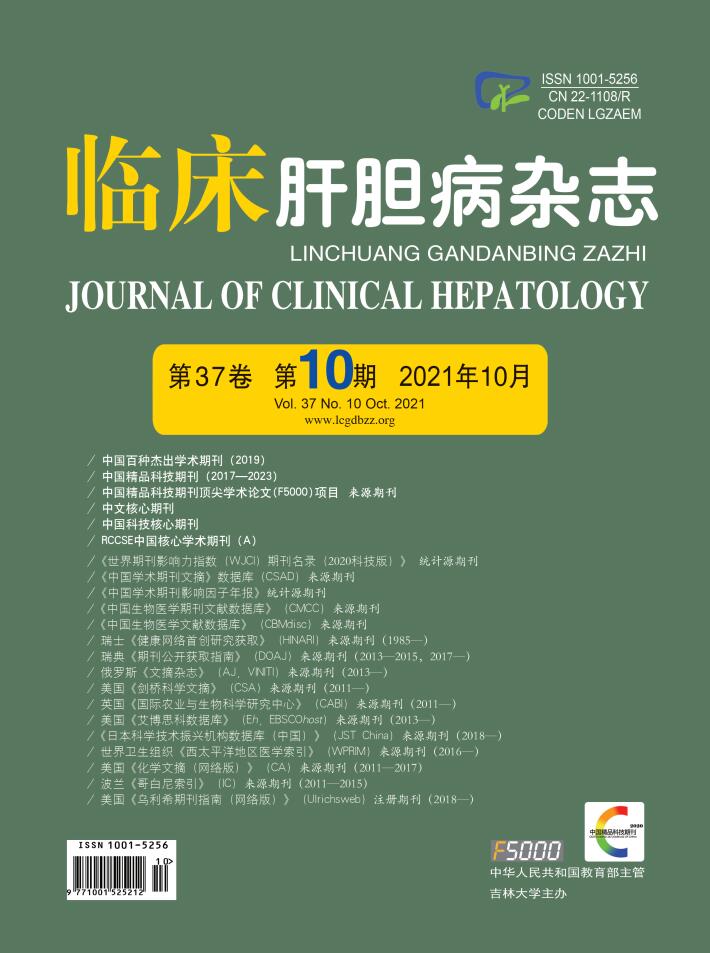| [1] |
FAWAZ R, BAUMANN U, EKONG U, et al. Guideline for the evaluation of cholestatic jaundice in infants: Joint recommendations of the North American Society for Pediatric Gastroenterology, Hepatology, and Nutrition and the European Society for Pediatric Gastroenterology, Hepatology, and Nutrition[J]. J Pediatr Gastroenterol Nutr, 2017, 64(1): 154-168. DOI: 10.1097/MPG.0000000000001334. |
| [2] |
CHEN HL, WU SH, HSU SH, et al. Jaundice revisited: Recent advances in the diagnosis and treatment of inherited cholestatic liver diseases[J]. J Biomed Sci, 2018, 25(1): 75. DOI: 10.1186/s12929-018-0475-8. |
| [3] |
GONCALVES A, ROI S, NOWICKI M, et al. Fat-soluble vitamin intestinal absorption: Absorption sites in the intestine and interactions for absorption[J]. Food Chem, 2015, 172: 155-160. DOI: 10.1016/j.foodchem.2014.09.021. |
| [4] |
YEUNG CY. Fat-soluble vitamin deficiency in pediatric patients with chronic liver disease[J]. Pediatr Neonatol, 2019, 60(1): 1-2. DOI: 10.1016/j.pedneo.2019.01.003. |
| [5] |
SHEN YM, WU JF, HSU HY, et al. Oral absorbable fat-soluble vitamin formulation in pediatric patients with cholestasis[J]. J Pediatr Gastroenterol Nutr, 2012, 55(5): 587-591. DOI: 10.1097/MPG.0b013e31825c9732. |
| [6] |
MOREIRA-SILVA H, MAIO I, BANDEIRA A, et al. Metabolic liver diseases presenting with neonatal cholestasis: At the crossroad between old and new paradigms[J]. Eur J Pediatr, 2019, 178(4): 515-523. DOI: 10.1007/s00431-019-03328-5. |
| [7] |
OKANO Y, OHURA T, SAKAMOTO O, et al. Current treatment for citrin deficiency during NICCD and adaptation/compensation stages: Strategy to prevent CTLN2[J]. Mol Genet Metab, 2019, 127(3): 175-183. DOI: 10.1016/j.ymgme.2019.06.004. |
| [8] |
ABDEL-RAHMAN N, SHARAWY MH, MEGAHED N, et al. Vitamin D3 abates BDL-induced cholestasis and fibrosis in rats via regulating Hedgehog pathway[J]. Toxicol Appl Pharmacol, 2019, 380: 114697. DOI: 10.1016/j.taap.2019.114697. |
| [9] |
MARCHILI MR, SANTORO E, MARCHESI A, et al. Vitamin K deficiency: A case report and review of current guidelines[J]. Ital J Pediatr, 2018, 44(1): 36. DOI: 10.1186/s13052-018-0474-0. |
| [10] |
AKIYAMA H, OKAMURA Y, NAGASHIMA T, et al. Intracranial hemorrhage and vitamin K deficiency associated with biliary atresia: Summary of 15 cases and review of the literature[J]. Pediatr Neurosurg, 2006, 42(6): 362-367. DOI: 10.1159/000095566. |
| [11] |
LEVY DS, GREWAL R, LE TH. Vitamin K deficiency: An emerging player in the pathogenesis of vascular calcification and an iatrogenic consequence of therapies in advanced renal disease[J]. Am J Physiol Renal Physiol, 2020, 319(4): f618-f623. DOI: 10.1152/ajprenal.00278.2020. |
| [12] |
FREUND C, GOTTHARDT DN. Vitamin A deficiency in chronic cholestatic liver disease: Is vitamin A therapy beneficial?[J]. Liver Int, 2017, 37(12): 1752-1758. DOI: 10.1111/liv.13433. |
| [13] |
|
| [14] |
DONG R, SUN S, LIU XZ, et al. Fat-soluble vitamin deficiency in pediatric patients with biliary atresia[J]. Gastroenterol Res Pract, 2017, 2017: 7496860. DOI: 10.1155/2017/7496860. |
| [15] |
VENKAT VL, SHNEIDER BL, MAGEE JC, et al. Total serum bilirubin predicts fat-soluble vitamin deficiency better than serum bile acids in infants with biliary atresia[J]. J Pediatr Gastroenterol Nutr, 2014, 59(6): 702-707. DOI: 10.1097/MPG.0000000000000547. |







 DownLoad:
DownLoad: